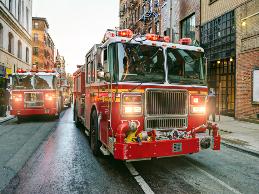I recently got back from presenting on workplace accommodations at a national safety conference. One common issue that came up repeatedly were instances when employees, both those with and without disabilities, posed what employers perceived as a safety risk at work. What is an employer to do when someone who appears healthy suddenly passes out on the office floor? What about the employee with a known history of heart issues who is now fainting in the back of the warehouse? There may be an underlying factor here -- a medical condition known as syncope.
What is syncope?
The American Heart Association states that syncope is the medical term for fainting and/or passing out. Syncope is the temporary loss of consciousness due to a lack of blood flow to the brain.
What causes syncope?
According to the Cleveland Clinic, syncope can be the result of environmental factors such as heat, stress, fatigue, taking medications, or dehydration. Syncope can also be the symptom of various underlying heart conditions, headaches, or seizure activity.
What does syncope look like?
Syncope can present itself differently in diverse individuals. Often times, a person will begin to feel lightheaded and may become nauseous and sweaty. Some individuals will experience the onset of a headache and their vision will become tunneled.
Is syncope a safety concern at work?
Not necessarily. Some individuals with syncope may pose a safety risk and some individuals may not. As with many things under the Americans with Disabilities Act (ADA), an employer is going to want to perform a case-by-case determination to assess if an employee with syncope is a safety concern. An employer will have to look at the job tasks, environment, and likelihood of an employee passing out to determine if that employee poses a direct threat. Under the ADA, even if an employee does pose a direct threat, an employer is required to consider accommodations, absent hardship, to lessen that threat.
What types of accommodations can be considered for syncope?
One way to ensure safety when dealing with syncope is to be prepared before the need arises. If an employer is aware of an employee’s medical condition and/or syncope, then having a plan of action in place could ease people’s minds. JAN has developed a sample template that can be used for medical emergencies. This Sample Plan of Action can be used to identify next steps and when/if to call emergency personnel.
You can’t control if someone experiences syncope at work, but you may be able to control the safety considerations of the workspace and equipment. Some products that may be feasible in your environment include, corner and edge cushions, fall protection,machine guards and shields, and personal safety and fall alert devices.
For employees who have to work in hot environments, cooling clothing, portable air conditioners, and fans may be considered to limit an employee’s exposure to heat.
For administrative accommodations, an employer may consider a modified schedule or telework arrangement following a syncope episode to permit a person to reorient and settle themselves. Restructuring a position to limit physical exertion or heat exposure may be considered for some roles.
As you can see, syncope doesn’t have to prevent someone from working. There are a variety of accommodations to consider, and some individuals may not need any accommodations to be safe in the workplace. With syncope or any medical condition, if you would like additional information or to talk through a specific situation, don’t hesitate to contact a JAN consultant directly.
References:








